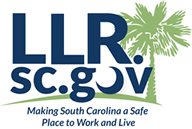Hello REALTORS®,
In October, I shared with you building permit data across the Upstate by county. Overall, annual building permits in 2024 were 7.5% more than 2020 and have leveled off after the crazy year—2021. In fact, it looks like 10,000 to 12,000 new housing starts across the six Upstate counties is the new normal, slightly higher than 2006.
The most important trend may be in the multifamily sector. After a surge in apartment development in 2021, when more than 4,000 apartment units were permitted in the Upstate, multifamily development has fallen back to about half that pace through the first half of 2025.
But what does it look like inside the various counties? I looked at the three Western Upstate counties—Anderson, Oconee, and Pickens. Note that I am limited by what is included in the Census data, which is reported to them by the various local governments.
Anderson County
Anderson County is divided into the City of Anderson and unincorporated Anderson County. Demand for housing, when denied by one county, will try to go somewhere else. Prior to the Great Recession, Greenville County was permitted about 50% of all new housing. That has fallen to about 40% in recent years. Anderson County is one of the counties that has picked up the slack. New housing has trended higher in Anderson County since 2018, the last time building permits were below 1,000 in the county. It is worth noting that while building permits have settled in at about 1,500 per year since 2020, that is the same number of permits issued in the county in 2006.

Oconee County
Oconee County has surged the most, which is notable because of its location and its rural nature. This attests to the growth and economic strength of Clemson. But like Anderson County, the strength of the housing market before the Great Recession eclipses the current market—even in 2021. More than 1,000 building permits per year were issued in Oconee County in 2007 and 2008.

Pickens County
Booms and busts, driven by a series of moratoriums affecting different parts of the county, and several large-scale developments in the Clemson and Easley areas, are the largest drivers of Pickens County housing during the last five years. And new regulations are influencing housing as well.
Pickens County recently ended a nearly one-year moratorium on new subdivisions last year and replaced it with a new moratorium on multifamily housing and townhomes. The county also enacted much larger minimum lot sizes throughout the county.
Clemson was under two different moratoriums between 2020 and 2022. And now Easley is also under moratorium that affects nearly all housing development. The data demonstrates the impact of these moratoriums. While they are in effect, home building falters. When they end, it surges.

Note that the 2021 Census data for the City of Clemson is incomplete. The county level data below is correct—1,454 building permits were issued in Pickens County in 2021.

Sprawl?
The Upstate has been on the front line of anti-growth politics since the housing market rebounded from the Great Recession. But that’s not new. Opposition to new housing just picked up where it left off in 2008. The hot spots are Greenville County and the Easley/Powdersville/Piedmont area.
Unfortunately, the result can be sprawl. And the building permit data indicates that sprawl is a growing problem in the Upstate. Greenville County has gradually increased its production, but as a percentage of the Upstate, it has fallen. Spartanburg County also has fallen as a percentage of the Upstate. Anderson, Laurens, Oconee, and Pickens counties have all increased housing production as a percentage of the region. That’s how sprawl happens.
Support RPAC
Elections are an important way that your association represents you and helps make a strong market for real estate. Through RPAC, your association supports pro-business candidates who understand the importance of a vibrant economy for real estate. You can help by supporting RPAC. It’s easy. Your association includes a voluntary contribution to RPAC on your annual dues invoice. Pay it, and you are an RPAC supporter. If you haven’t supported RPAC this year, I encourage you to do so by clicking here.
Michael Dey, Director of Government Affairs



